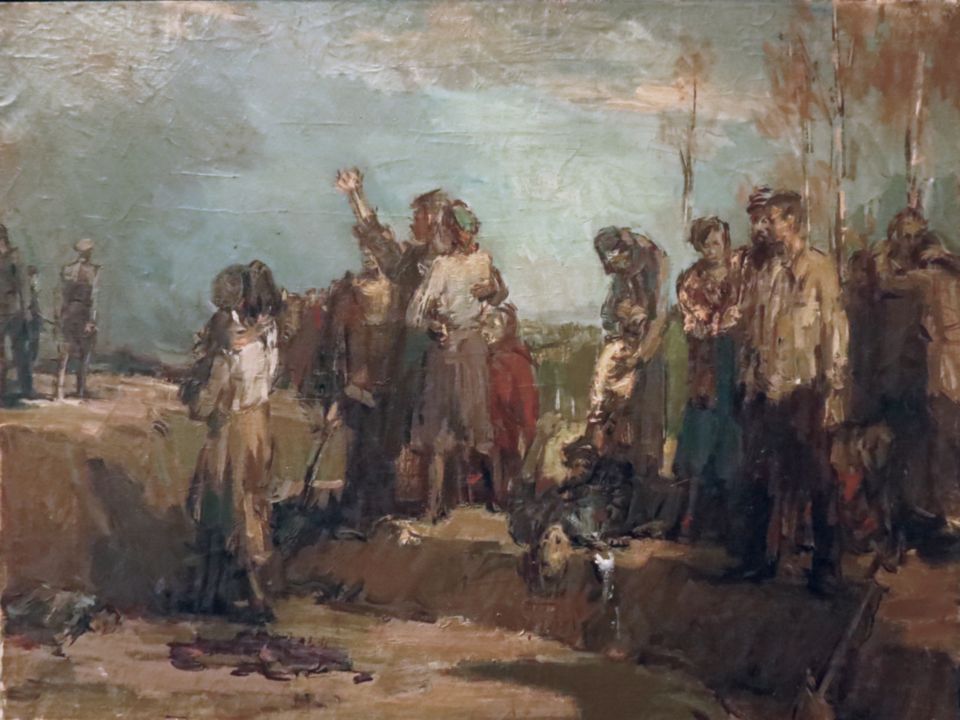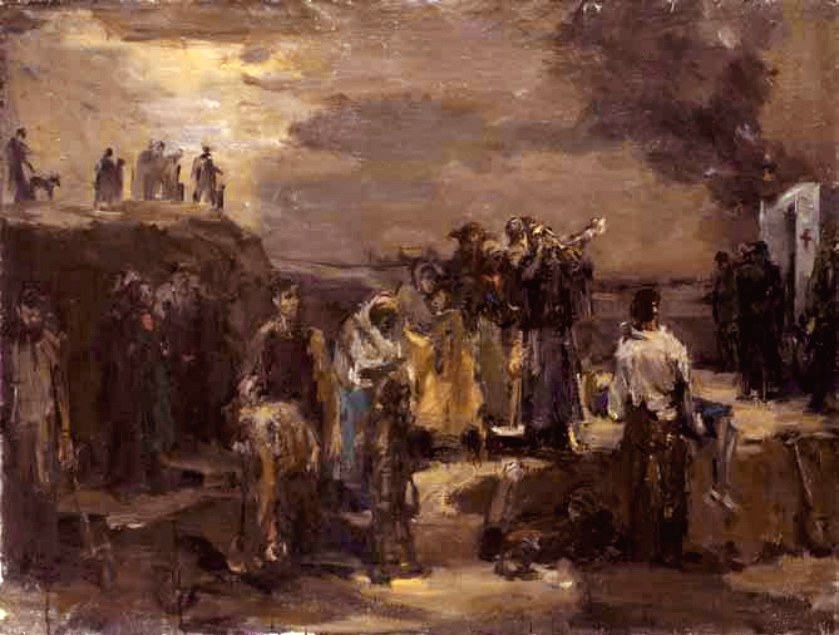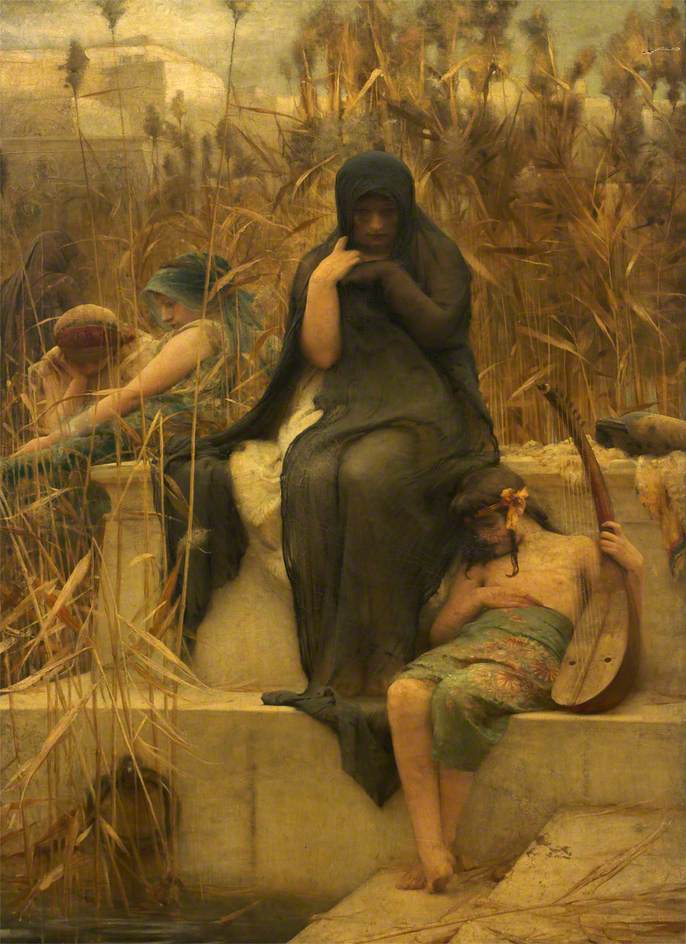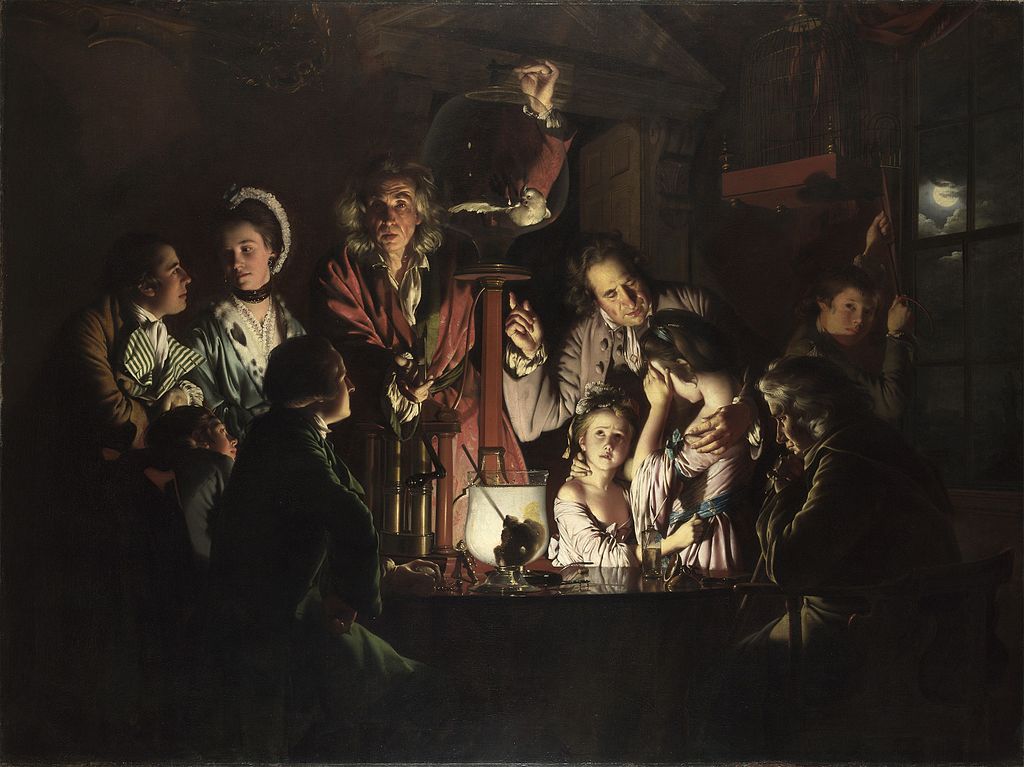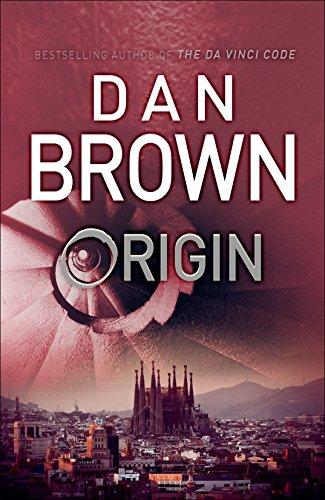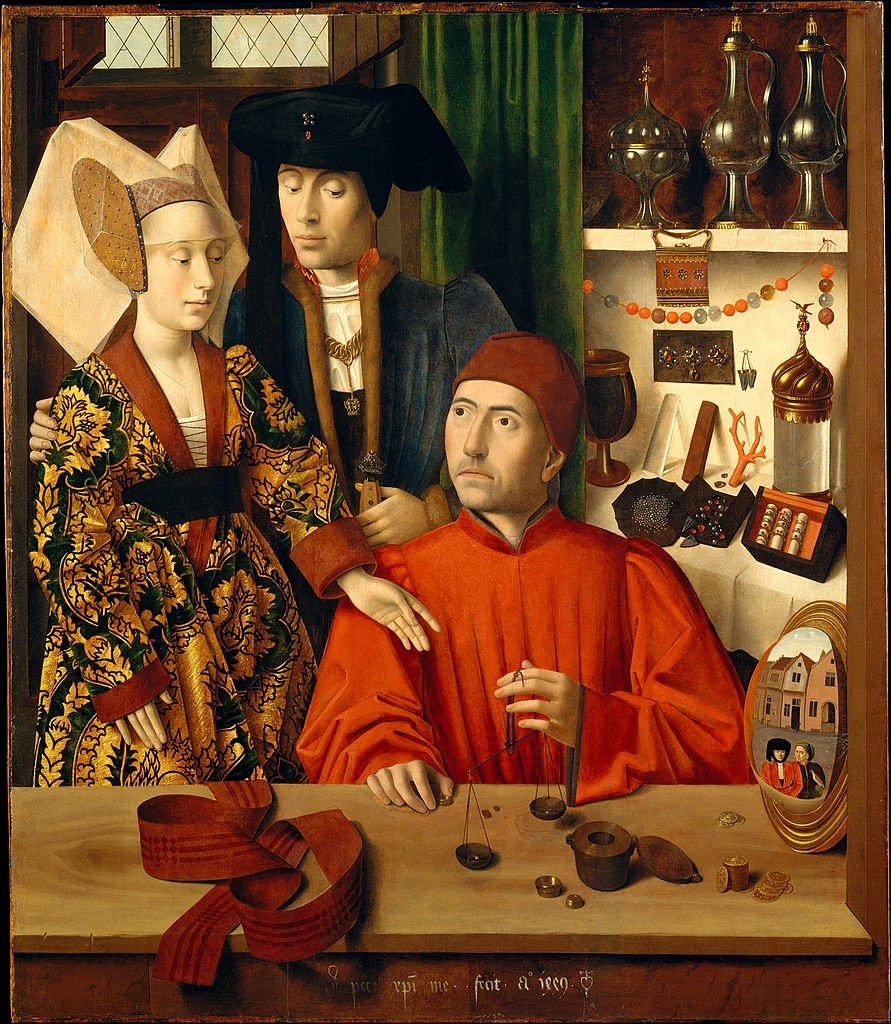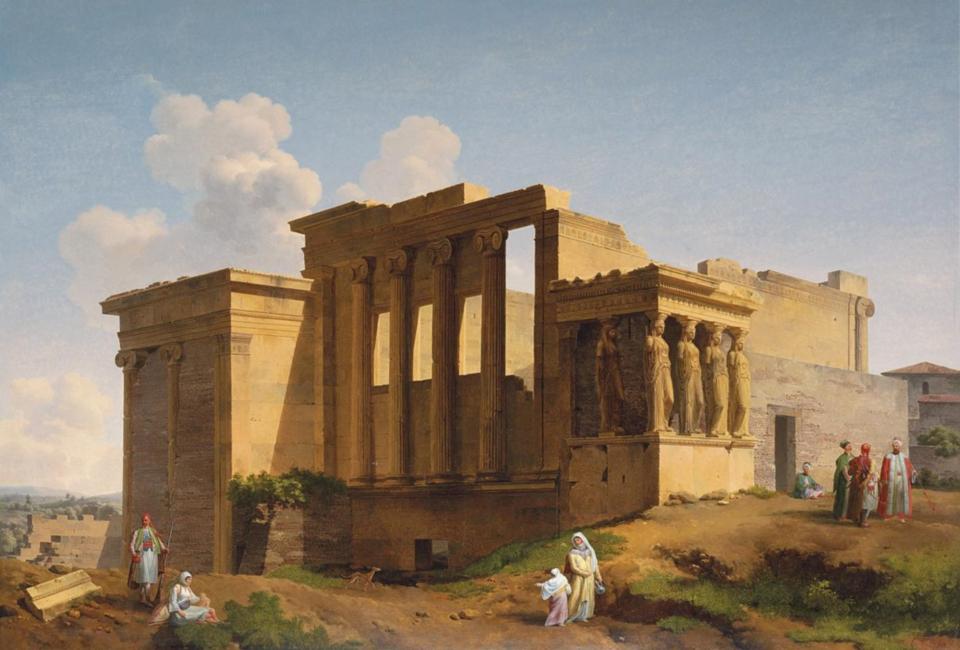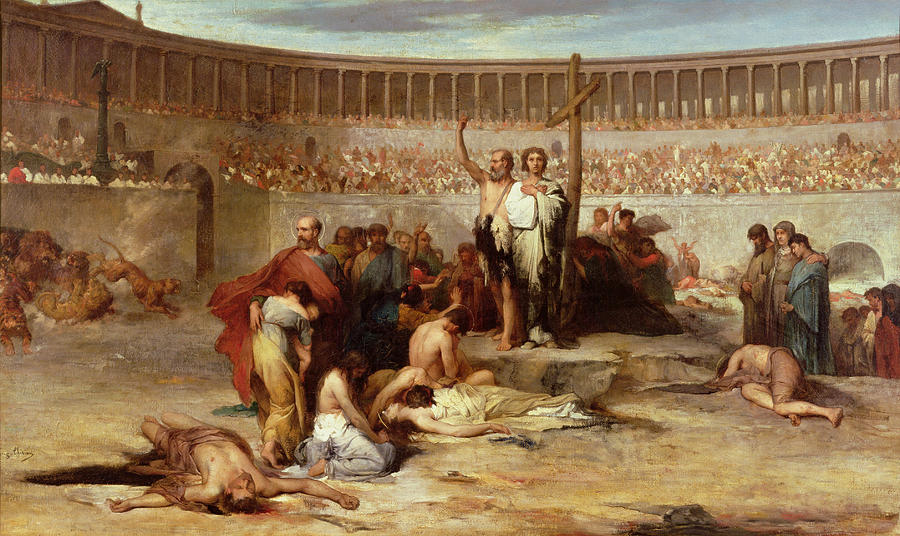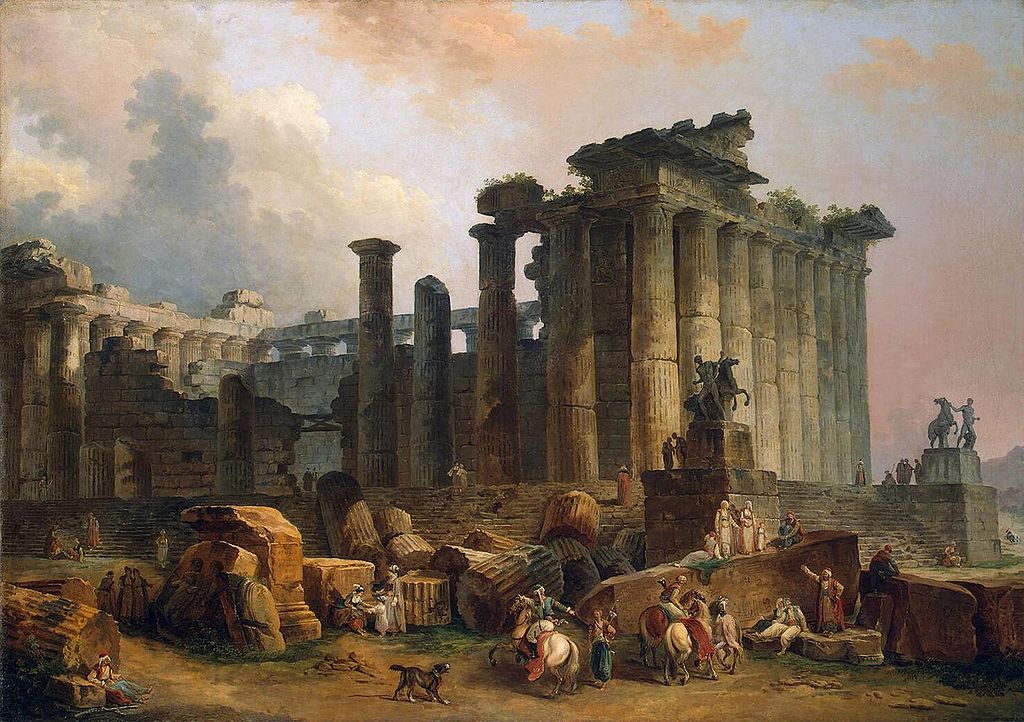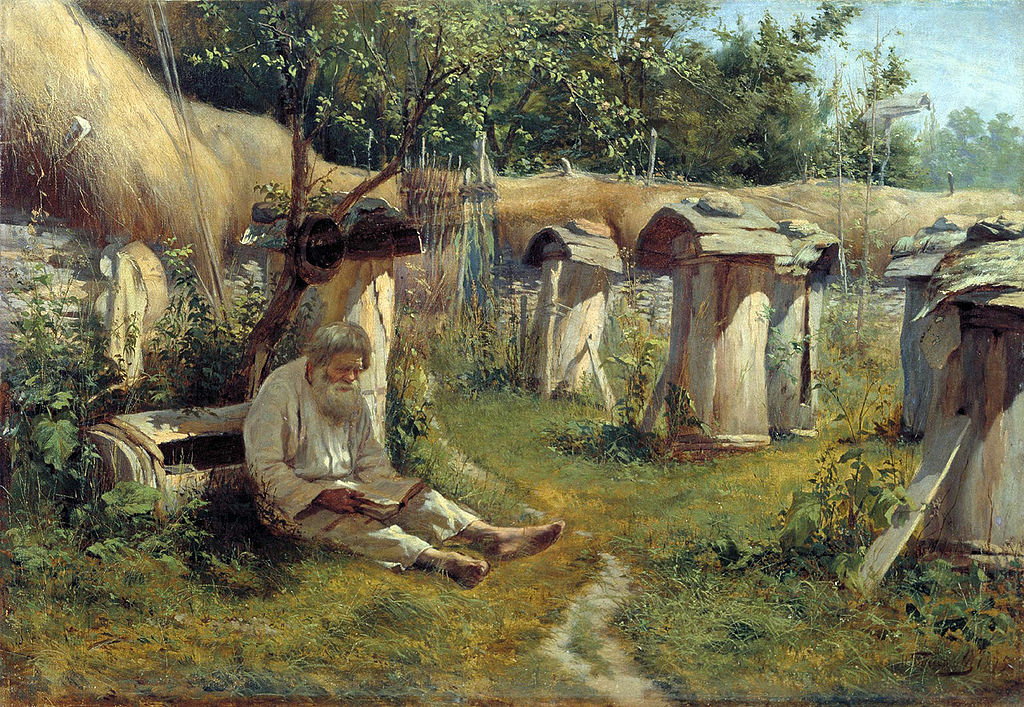Music and history are closely intertwined. Music answers an innate urge in humanity – that of transcendence. How can we rise beyond the mundane, and how can we commune with ideas far greater than us – ideas such as, perfection, beauty, truth, goodness.
Language can only meet us half way because by its very nature it is expository and therefore “teacherly”; We speak and think so that we may learn and know. Language cannot become what it explains. Language is the bearer of ideas, of culture; it is not ideas or culture.
Music, on the other hand, is not expression, because it does not explain. Rather, music is what words seek to describe: Music is idea. Music is not about perfection, beauty, truth, goodness. Music is itself perfection, beauty, truth, goodness. We have only to deliver, for example, a violin into untrained and unskilled hands, and we will immediately know truth from falsehood – music can only exist as perfection.
Humanity has always understood music as transcendence – which is why we have evidence of music far earlier than any evidence of writing.
For example, there are more than thirty bone flutes and whistles found in France, Germany, and England. The most recent ones come from the Geissenklöterle cave, in southern Germany and date to the early parts of the Upper Paleolithic (around 43,000 BC).
Inside the Trois-Frères cave, in the Ariége region of France, there is a faint image of a man, dressed in the hide and head of an animal perhaps playing a flute.
The current work of Iegor Reznikoff, at the University of Paris, suggests that cave paintings were intimately linked to music, since he found that the greatest density of images was always located in those parts of a cave that had the greatest resonance. The graphic representation of music, therefore, is far older than the need to write.
Humanity and music are inseparable.
The earliest confirmation of writing, on the other hand, does not emerge until the latter portions of the Neolithic era, with the Dispilio Tablet (5000 BC); the Tartaria Tablets; the Vinča symbols (5000 to 4000 BC); and the Gradeshnitsa Tablets (4000 BC).
These pieces remain enigmatic since we cannot read any of them. In order to decipher an ancient script, we need a lot of it; frequency and repetition are crucial in the decoding process; otherwise, it is like playing “hangman” without any clues and without an alphabet. True writing did not emerge until the Uruk period (4000 to 3100 BC), in Mesopotamia, with cuneiform, those wedge-shaped graphemes that remained in use well into the first century AD.
Given humanity’s deep connection with music, why did so many ancient civilizations that were literate not also create a system of writing music?
Ancient Egypt is mute about its music, although we have so many depictions of musical activity as well as actual musical instruments.
Even ancient Rome has left no music behind – so much so that some historians even suggest that the Romans were a particularly unmusical bunch.
It is all a puzzle as to why music remained firmly and deeply tied to an oral tradition, as evidenced in India, for example; and therefore we cannot say that the music of India is very old, despite the assumption of great antiquity.
The Indian melodic structures (the ragas) can only be traced back to the courts of the Mughals and provincial princes with any degree of certainty. The three important theoretical treatises are relatively recent – the Natyashastra and the Dattilam are from the third century AD; the Sangeet Ratnakara was written sometime in the thirteenth century AD. We cannot go any further back with any degree of certainty. It was V.N. Bhatkande (1860 to 1936), who devised a notational system for Indian music.
In China, there are tablatures (finger-positioning, tuning, and strumming methods) for various melodies. These date from the Tang (seventh century AD) and the Song (tenth to the thirteenth centuries AD) Dynasties.
These tablatures constitute the Gongche system that employed the wenzi pu (full ideogram notation), which is not overly accurate as it can indicate several possibilities. In other words, clarity is a problem, since notes have to be guessed – we can never be certain.
One such tablature survives (written in a scroll discovered in Kyoto, Japan), for a melody called, “You-Lan,” (“The Secluded Orchid”); the scroll dates to sometime before the tenth century AD.
The melody is for the guqin, the seven-stringed long zither. There have been many attempts at guessing and playing “You-Lan” from the finger-positioning and the strumming techniques indicated – but none have yielded satisfactory results.
In the end, we have to acknowledge that Chinese music, like the Indian, was essentially oral in nature. In addition, this is likely true of ancient Egyptian and Roman music as well.
Therefore, aside from the Greeks, did any music from the ancient world survive?
Until about 1968, the answer would have been a resounding, “No.”
Things changed when a rather obscure book came out in Paris, with the curious title – Ugaritica 5: nouveaux textes accadiens, hourrites et ugaritiques des archives et bibliothèques privées d’Ugarit (Ugaritica 5: New Akkadian, Hurrian, and Ugaritic Texts from the Private Archives and Library of Ugarit).
It was another volume in the continuing series of publications of ancient texts that had been discovered in Syria, some forty years earlier. It has been a monumental task cataloguing and transcribing these texts.
The discovery of thee texts was made back in the early summer of 1929 by two French archaeologists.
They had begun the trek in two automobiles, heading north from Beirut and into the Alawite State that hugged the coast of Asia Minor, hard by the Mediterranean Sea.
This territory, including the States of Aleppo and Damascus and Greater Lebanon, were under the French Mandate, following the First World War.
The previous masters of this area, as well as of the entire Middle East, the Ottoman Turks, had been swept away after the defeat of the Germans, with whom they were allied.
The narrow road that the automobiles of the two archaeologists followed, at the dizzying speed of 25 miles per hour, was newly built by the French; and it was only a partial one because it soon vanished in a wasteland of rock, scrub and hillock; to the east rose the Al-Alawiyin Mountains.
The two men realized that their cars were no match for the terrain – and they would have to go back to Beirut and return with transport better suited – camels.
The two men were Claude Schaeffer and Georges Chenet, archaeologists who had built a reputation for themselves in Europe.
Schaeffer was an assistant at the Museum of Prehistory and Gallo-Roman Archaeology in Strasbourg; he had published extensively on the Neolithic Alsace and played a leading role in the “Glozel Affair” of 1925 (a cache of antiquities was purportedly found which Schaeffer and others proved to be forgeries). Chenet was an expert in Gallo-Roman ceramics and a master tile-maker.
An unlikely pair, but they had been sent by the Académie des Inscriptions et Belles-Lettres, the venerable society dedicated to the study of ancient and medieval culture.
Schaeffer headed the mission whose purpose was to begin digging at Minet el-Beida, a little harbor on the Mediterranean, in the Alawite State.
Back in the spring of 1928, a farmer named Ibrahim, while plowing his field, had unearthed a flagstone. Beneath was a tomb built of cut rock that still many artifacts, not only of ceramic, but of gold and ivory.
When Ibrahim began to sell what he had found to antique dealers, the word got out of a new site. Eventually the French authorities got involved and Académie des Inscriptions et Belles-Lettres became the official sponsor of an expedition.
Minet el-Beida was in fact a necropolis. This meant that a city had to be nearby. The obvious choice was a mound, some sixty-feet high, which lay a few hundred yards to the east. The locals called the mound, Ras Shamra (“Fennel Hill” because of the abundant fennel that grew on it).
When Schaeffer and Chenet turned their attention on this mound, they did indeed find an ancient city. Before long, they began to find cuneiform clay tablets that named the city they were digging – Ugarit – a name well known the late Bronze Age.
Luckily, Ugarit has largely escaped damage at the hands of Isis, who have destroyed many ancient sites.
In May of 1929, the city yielded its greatest treasure. In a pillared-room, later identified as the royal palace, thousands upon thousands of clay tablets lay piled. They were copies of royal correspondence, trade records, religious stories and myths, poetry, land deeds, and international treaties.
It was a treasure trove of historical data. We are still working through the vast amount of information contained in these documents. The dig would last a lifetime for Schaeffer. Chenet, sadly, would die early in 1951. Work at the site would continue until 2000. Much has been discovered; much lies buried still, to be dug up at a later, and safer, time.
Ugarit flourished during the Amarna Age (1550 to 1290 BC) – that rich period of the Bronze Age when trade flourished and four great powers vied for supremacy with Egypt.
There were the Hittites to the northwest; the Mycenaeans in Greece and Crete; the Hurrian kingdom of the Mitanni in the upper reaches of the Euphrates; Babylon to the south under Kassite rule; and Assyria to the northeast.
Ugarit was a harbor city through which flowed goods from the then known world – ceramics and weapons from Mycenae, gold and ivory from Egypt, silver, copper and tin from Assyria and beyond, horses and chariots from the Mitanni and Hittite kingdoms.
The kings of Ugarit kept close ties with all the neighboring monarchs; we know of eight, whose reigns lasted from 1350 to 1200 BC.
The international character of the city is demonstrated by the presence of all the major languages current at the time – Egyptian hieroglyphics, Phoenician, Akkadian, Sumerian, Hurrian, Hittite, Cypro-Minoan (similar to Linear A), as well as the city’s native tongue – Ugaritic, which belongs to the larger Northwest Semitic family. Curiously, so far, we have not found any evidence of archaic Greek (Linear B); perhaps one day we shall find Linear B tablets as well.
The texts discovered also make clear that this thriving city had developed a far more efficient system of writing – an alphabet that used cuneiform signs for sound values; in other words, an alphabetic cuneiform, which is entirely different from other types of cuneiform being used at the time.
It is a matter of debate whether the innovative Ugaritic writing system is the world’s first alphabet. As well, the religious texts show many parallels to the literary aspects of the Hebrew Bible, such as the story of Daniel.
Ugarit came to a violent and sudden end sometime after 1196 BC when it was burned to the ground. It was part of a general destruction pattern which first becomes evident around 1200 BC, and is known as “the Bronze Age Collapse,” or simply, “the Catastrophe.”
For those alive at the time, it was a calamity of untold proportions. Cities in the Near East, Greece and the Aegean were put to the torch – forty-seven in all were burned to the ground. Civilization itself was snuffed out.
Troy (Hissarlik in Turkey) went up in smoke at this time, which perhaps suggests a historical basis for the legends told by Homer. Only Egypt managed to repel the attacks, although, it would never regain its former glory.
We know that Ugarit’s end was swift because, dramatically, at the very moment when it was attacked and burned, about a hundred letters from the king were baking in an oven (to get them ready to be “mailed”). They would never be sent. Their urgent pleas for help would remain unread until our own era.
Who was behind all this devastation? The historian Robert Drews has very convincingly shown that the Catastrophe cannot be explained by recourse to impersonal forces, such as, drought, earthquakes and a systems collapse; rather, human agency is involved.
The Catastrophe was the result of the development of a new mode of warfare – infantry, foot-soldiers equipped with javelins that had different shaped heads (tanged and elliptical) and an entirely new type of sword, the long Naue Type II, that had a blade some 70 centimeters in length – excellent for slashing and thrusting. Both the javelin and the sword entirely neutralized the super weapon of the Bronze Age – the horse-drawn chariot, the basis of defense for all cities. The chariot was no match for infantry tactics.
The Egyptians named these marauders, “Sea Peoples,” because they arrived suddenly in ships.
A different world would re-emerge – the world of the Iron Age – without great palaces, smaller settlements and villages, parochial in nature, community-based, hardly international. The period is also commonly known as a Dark Age.
Such is the world from which emerged those texts published in Ugaritica 5 in 1968.
In a review copy, one scholar, named Hans Güterbock, noticed something peculiar about a section in which thirty-one hymns were printed – beneath each one were words that the editors said were unknown and therefore untranslatable.
However, Güterbock, who was an expert in the study of cuneiform, instantly recognized these as Akkadian musical terms. His inquiry continued until he and several others established the fact that underneath these thirty-one hymns were the very melodies to which they were to be sung.
Thus was discovered the earliest written music.
The original versions of these hymns were on baked clay tablets, oblong in shape (to fit neatly into the hand). The writing on the surface of each tablet was in three sections.
On the top were the lyrics. In the middle was the musical notation. At the bottom were the names of the scribes who wrote out these tablets, followed by the names of the composers. Each section was marked off by a double line, and the text was demarcated by a double winkelhaken, or hooks (they look like over-sized quotation marks).
From these tablets, we now know the names of two scribes (Ammurabi and Ipthali – both are good Semitic names; Ammurabi being the more familiar Hammurabi, although our scribe is not to be confused with his more famous namesake – the king, known for his law code). And we know the names of four composers (Tapthikhun, Pukhiyanna, Urkhiya, and Ammiya – all are typical Hurrian names).
The lyrics are in Hurrian, which is noteworthy, since Ugaritic was the “mother-tongue” of this ancient city. Ugaritic is a Semitic language, rather close to Hebrew.
But Hurrian is a very different language, and we do not entirely understand it. (It is of great personal interest to me, and I have been closely studying it for over two years). The people who once spoke this language, whom we call “Hurrians” for the sake of convenience, were at one time a highly influential nation in the ancient Near East. Their ideas and their culture had a deep and lasting impact upon their neighbors, particularly, the Hittites, the Assyrians and the Hebrews.
The very fact that Semitic scribes in Ugarit were busily transcribing hymns in a language not their own suggests that things Hurrian were held in high regard. This is especially true of religious rituals whose traces can be found in the Hebrew Bible.
The Hurrians were also renowned horse trainers (this expertise stemmed from a close association with the Indo-Aryans, who in the Bronze Age were regarded as the masters of the horse and horsemanship). The earliest horse training manual is written by a Hurrian named Kikkuli (the text of this manual is in the Hittite language, and dates from about 1345 BC). The Hurrians together with the Indo-Aryans established the formidable kingdom of Mitanni, which endured from about 1500 BC to 1300 BC.
Hurrian is also interesting because it has no genetic link to any other language in the Near East. It is not Semitic, or Sumerian, or Indo-European. Rather, it is an ergative, agglutinative language, which simply means that the idea of a subject in a sentence is entirely absent, and cases, tenses, and attribution are expressed by adding particles and suffixes to word-roots. Likely, Hurrian originated in the Caucasus region, where such languages were and are common.
Since all the thirty-one clay tablets published in Ugaritica 5 are fragmentary, only one hymn could be reconstructed into a complete version; this was possible because this one hymn showed up on three of the thirty-one tablets. It must have been a very popular and important piece.
So, what was missing on one tablet could be completed by reference to the other two. The complete version is known as “Hurrian Hymn 6,” and the lyrics suggest that it is a song of supplication to the goddess Nikkal, who was specifically worshipped at Ugarit. She was the goddess of fruit orchards and fertility and was married to the moon god Yarikh (or Yorah in Hebrew; commonly Anglicized as, “Jorah,” mentioned in Ezra 2:18). The famous city of Jericho is named after this good.
The words of the hymn are difficult to interpret with precision, but generally, they are the prayer of a woman imploring Nikkal to grant her a child.
Following the transcription of Theo Krispijn, we hear the woman’s plaintiff voice – unalt akli samsammeni, says the original, “I have come before you, imploring.”
There is divine promise – kaledanil Nikalla nikhrazal khana khanodedi attayatal – “for it is Nikkal that strengthens them and permits the married couples to bear children; and the fathers bring forth children.”
Being barren is a curse – assati veve khanokko – “why as your wife have I not born a child?”
The hymn in the original is called a zaluzi. We do not know what this word means. Perhaps it has something to do with a chanted plea – a song of supplication, perhaps.
The melody of this hymn (to lyre accompaniment) is explained in the original as being in the nidqibli mode. This has recently been understood (by Richard Dumbrill) to be the enneatonic scale of E. The rhythm is 2+3+2/4, a pattern that is heard even today in the folk songs of the Caucasus region (the original homeland of the Hurrians).
There have been ten attempts at interpreting the melody over the years, the most important being that of Anne D. Kilmer, David Wulstan and Marcelle Duchesne-Guillemin (in the 1970s); M.L. West and R.J. Dumbrill (in the 1990s); and Theo Krispijn (in 2000).
The most lyrical version is by Dumbrill. Recordings have been made by the Ensemble de Organographia and by Michael Levy. Recently, Dumbrill’s version has also been made available, sung to the lyre.
The tune has a soft, rueful lilt that still has the power to move, for it carries the deep pathos of a time long lost, of hands that plucked the harp long turned to dust, of faces lost to oblivion, and voices lost in the great hush of vanished millennia. Yet from the silence, there bursts forth a song.
And suddenly we become one with the scribes Ammurabi and Ipthali; we become the audience of the composers Tapthikhun, Pukhiyanna, Urkhiya, and Ammiya; and with tender hearts we listen to the mellifluous voice of a woman, who shall be forever nameless, chant her plea, until the last note quivers and fades on the strings of the lyre.
The hymn may be heard here.
The photo shows, “By the Waters of Babylon,” by Arthur Hacker, likely painted in 1888.
